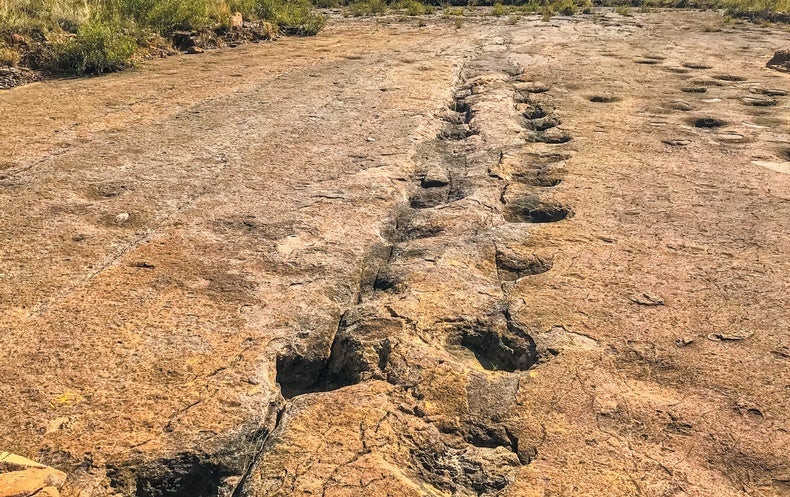Dinosaur Diets May Help Explain Dramatic Diversity

If you traveled across what is now North America around 75 million years ago, you would see vastly different dinosaur species everywhere you went. The dramatic variation in this period’s fossils, found throughout the western half of the continent, has long puzzled paleontologists. Some have proposed that mountains or rivers might have isolated evolving dinosaur populations, leading to greater diversity. But a new study suggests a different possibility. Part of the answer, researchers report in the journal Palaeontology, rests in what herbivorous dinosaurs were munching on.
Paleontologists can investigate dinosaur diets by looking at geochemical isotopes—versions of elements with different numbers of neutrons—found in fossilized bones. As herbivorous dinosaurs digested ferns and conifers, for example, isotopes of oxygen, carbon and strontium from those plants accumulated in different proportions. Researchers have identified the distinct ratios associated with each plant type and the locations where it grew; measuring the isotopes in dinosaur bones can tell experts not only what these animals ate but where they ventured for food.
In the new study, Carleton University paleontologist Thomas Cullen and his colleagues looked at the horned ceratopsids, armored ankylosaurs and duck-billed hadrosaurs of southern Alberta’s Oldman Formation. Horned and armored dinosaurs walked on all fours with their heads near the ground, and isotope ratios show these dinosaurs ate low-growing plants in a relatively limited geographic area. But the duck-billed dinosaurs, Cullen and co-authors found, could reach higher foliage in the trees and fed on a broader range of plants—and these animals ranged as far as 100 kilometers in search of sustenance. “I was initially surprised at just how different the hadrosaurs are from the ankylosaurs and ceratopsids” in their eating and travel habits, Cullen says.
If horned and armored dinosaurs foraged only in relatively constrained areas, such dietary restrictions might have helped drive the evolution of their many new species in each habitat—whereas duck-billed species, whose individuals had broader geographic ranges, show far less variation. “This study is an example of how the use of geochemical and high-precision analytical techniques continues to allow paleontologists to make significant interpretations of ecology and biology of ancient ecosystems,” says University of Arkansas geologist Celina Suarez, who was not involved in the research.
Such work could offer new insights into dinosaur species’ distribution 75 million years ago, says Andrew Farke, a curator at the Raymond M. Alf Museum of Paleontology in Claremont, Calif., who also was not involved. “I would bet the diet of hadrosaurs probably relates to the broad distribution of their species,” he adds.


